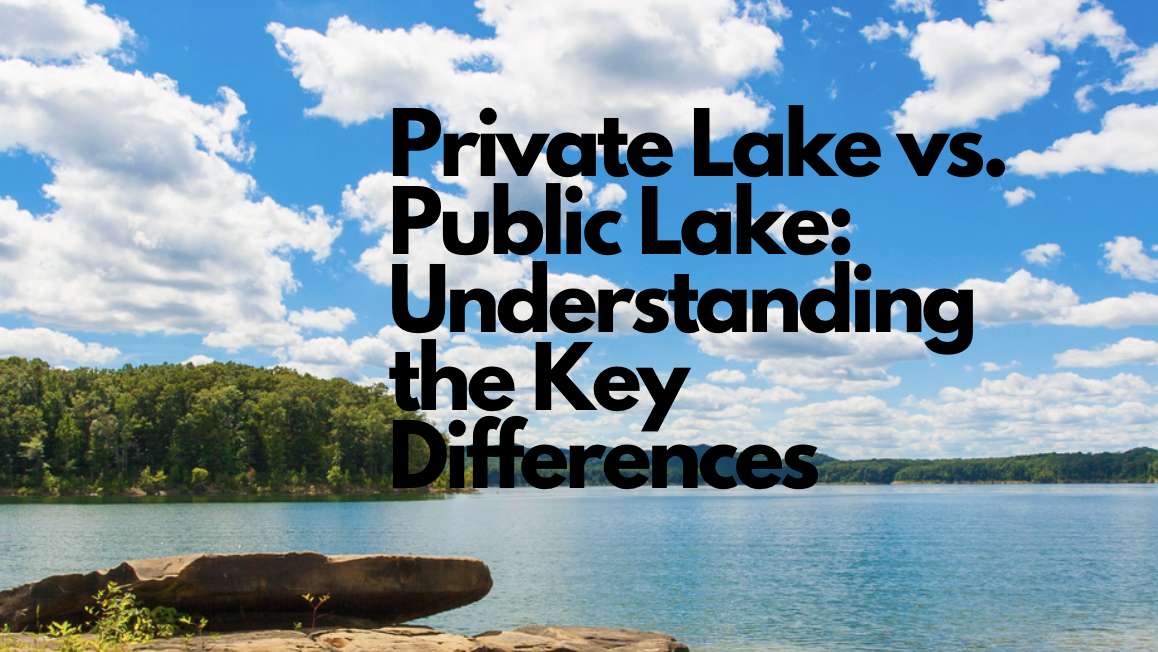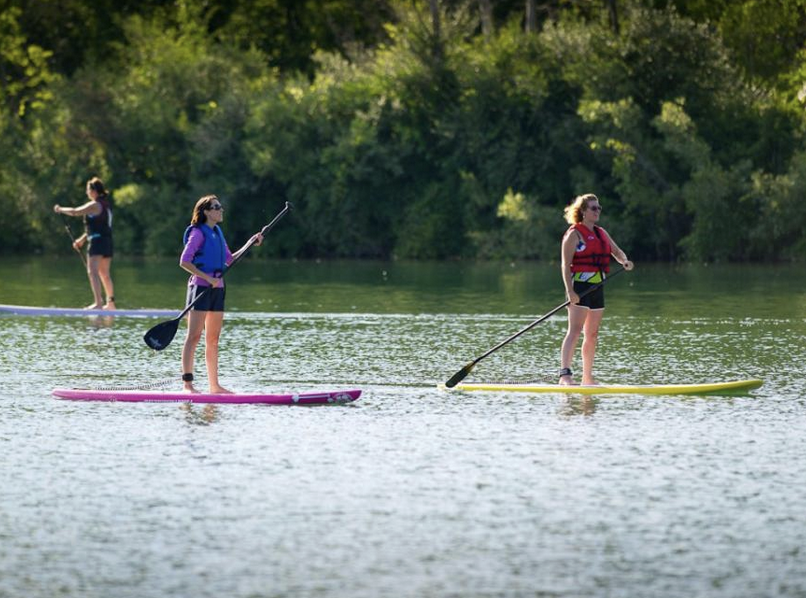
Lakes are serene bodies of water that offer a plethora of recreational opportunities. Whether it’s for fishing, swimming, boating, or simply enjoying nature, lakes are popular destinations for people seeking relaxation and adventure. However, not all lakes are the same; they can be broadly categorized into private and public lakes, each with its own set of characteristics and regulations. In this blog post, we’ll explore the differences between private lakes and public lakes, examining their access, ownership, management, and overall experience.
Ownership and Access
The most significant distinction between private and public lakes lies in their ownership and accessibility. Private lakes are owned by individuals, organizations, or communities, which means access to these lakes is restricted to specific individuals. Typically, private lakes are found within gated communities, resorts, or on privately owned land.
In contrast, public lakes are owned and managed by government entities, such as state or federal agencies, and are open to the general public. Public lakes are often located within national parks, state parks, or other protected areas. Examples include Yellowstone Lake in Yellowstone National Park and Lake Tahoe, which spans the border between California and Nevada.
Regulations and Restrictions
The ownership structure of private and public lakes influences the regulations and restrictions imposed on visitors. Private lakes are subject to the rules and guidelines set forth by their owners or governing bodies. These regulations can include restrictions on fishing, boating, swimming, and other activities, as well as rules regarding noise levels, use of motorized watercraft, and hours of operation.
On the other hand, public lakes are governed by state or federal laws, as well as specific regulations established by the managing agencies. These regulations are designed to protect the natural environment, ensure public safety, and promote sustainable use of the lake. Common regulations for public lakes include fishing limits, boating speed limits, designated swimming areas, and rules against littering and pollution.

Environmental Conservation
Environmental conservation is a crucial consideration for both private and public lakes. Private lake owners have the autonomy to implement conservation measures tailored to the specific needs of their lake and surrounding ecosystem. This can include initiatives such as shoreline restoration, invasive species management, water quality monitoring, and habitat enhancement projects.
Public lakes, on the other hand, are typically managed by government agencies tasked with preserving the natural integrity of the lake. These agencies often implement comprehensive management plans that address a wide range of environmental issues, including water pollution, habitat degradation, erosion control, and wildlife management. Public input and community engagement play a significant role in shaping these conservation efforts.
Recreational Opportunities
Both private and public lakes offer a variety of recreational opportunities for visitors to enjoy. Private lakes may provide exclusive amenities such as private beaches, marinas, boat launches, and waterfront properties for residents or members of the community. These lakes often cater to specific recreational activities. They also offer additional amenities such as hiking trails, picnic areas, and recreational facilities.
Public lakes, on the other hand, are accessible to a broader range of visitors and typically offer a wider variety of recreational opportunities. From fishing and swimming to kayaking, canoeing, and paddleboarding, public lakes provide something for everyone. Many public lakes also feature campgrounds, hiking trails, nature centers, and interpretive programs, allowing visitors to immerse themselves in the natural beauty.

Community and Social Dynamics
The ownership structure of a lake can significantly influence the sense of community and social dynamics among its users. Private lakes often foster a close-knit community of residents or members who share a common interest. Residents may organize social events, club activities, and volunteer efforts to enhance the lake experience.
Public lakes, on the other hand, attract a diverse array of visitors from different backgrounds, cultures, and regions. These lakes serve as public gathering spaces where people can enjoy nature, engage in recreational activities, and connect with others. Public lakes also provide opportunities for education, outreach, and community involvement, as visitors learn about the importance of environmental stewardship and conservation.
Conclusion
In summary, private and public lakes offer distinct experiences and opportunities for recreation, conservation, and community engagement. Private lakes provide exclusive access and amenities for residents or members. Public lakes offer a more inclusive and accessible environment for the general public. Understanding the differences between private lakes and public lakes can help individuals make informed decisions about where to enjoy their next outdoor adventure. Whether it’s a secluded retreat on a private lake or a bustling day at a public beach, there’s a lake experience for everyone to enjoy.
Posted by Scott Freerksen “The Lake Guy”
